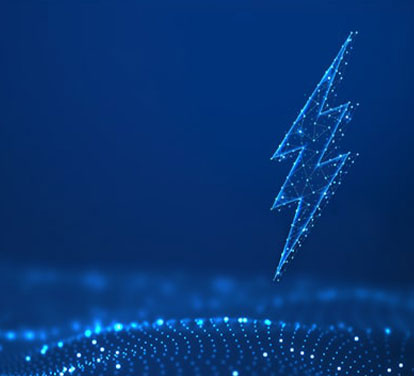You know that feeling—someone approaches you with that look, it’s so slight but clearly there – the aura that tells you you’re about to be handed a whole bunch of work you weren’t planning for. We all know that feeling. We’ve all been in that position.
There are usually two ways to deal with it – resist or to embrace it. This scenario is becoming increasingly common in Asset Management. As we do our work, day to day, to build a strong IT Asset Management program, we build connections and credibility within the organization. This is a very good thing. The information and processes we establish and improve for our IT organization are often not only for our team’s use, but rather, have clear use cases and implications to support other parts of IT.
The Role of Convergence in Asset Management
Let’s start by remembering that we have for a long time realized that IT Asset Management is a business problem disguised as an IT problem.
What we see now are technologies present in all business environments. – Examples include:
- Monitoring systems like security cameras or sensors that check room temperature or the open/close status of a door
- Industrial systems like robotic arms, electromechanical arms, or production equipment
- IoT-controlled equipment across the gamut
- Medical floor systems.
Almost all current generation models of IT assets are networked, and as a result, those devices – along with their interconnected components – are now something the Security teams must secure. Outside bad actors – hackers, foreign nations, criminal organizations, etc. – are all constantly probing most company networks from the outside, and with the massive increase in devices that are networked – and remotely controllable – the Security team’s job continues to grow.
Any successful Enterprise Security team relies on a comprehensive asset management repository – one of their key tenants. ‘You can’t secure what you don’t know you have’ is a close cousin to ITAM’s own, ‘You can’t manage what you don’t know you have.’ The IT Asset Repository starts to become the Corporate Asset Repository.
Expanding IT Asset Management into Enterprise Asset Management
The CISO and other executive leaders need a clear understanding of what they own to make good security decisions and to make other business decisions like expansion planning, budgeting, and other ongoing investment initiatives and risk calculations. This makes good business sense – wise business leaders are always looking to get the most out of the existing investments as well as protect the company while moving the business forward.
Convergence as I put forward - is really just an expansion of IT Asset Management into the Enterprise Asset Management concept. The scope starts to change – to widen - because the business finally realizes there are ways to capture good inventory and usage data about more holistic data than just the IT set. In fact, the fastest way forward for organizations is to copy many of the best practices, policies, and frankly data systems that IT Asset Management has built during the last few decades. Many IT asset practices have been put to the test and found to be among the most reliable, consistent methods for supporting the IT organization– so it is very easy to use those as a strong starting point for the expansion.
Roadmap to Post-Convergence Enterprise Asset Management
Convergence opens up lots of opportunities but also responsibilities. This will not be an overnight transformation for most organizations – which is good. Our friends in IT Security have been on a similar journey of expanding scope and responsibilities. There should be time given for some reasonable planning – we will need:
- Systems that are more capable and comprehensive than our current IT ones.
- More staff to help provide the appropriate engagement and care for these new areas of responsibility.
- More departmental budget to support this expansion.
- New ways of thinking and related education to adopt these practices to fit some of the newer divisions within the business.
We also need to be thinking about what roadmaps for the expanded scope look like. Rome wasn’t built in a day, neither was your IT Asset Management practice, and your new post-convergence Enterprise Asset Management organization won’t be either.
Practical Steps for Managing the Transition
Now this sounds like a lot of work. Probably more than anyone thought of when you saw that person coming into the meeting room, the one where you caught that feeling of more work coming your way. There is no doubt that it is more work. Not every organization will move at the same speed or with the exact same goals, but I’m confident this is real, so I want to help encourage you all.
- Volunteer: Volunteering for more work is always a slippery slope – nobody wants to take on more work. Start with talking to your direct manager. You'll need their support for this to be successful.
- Start your research: Ask questions of your manager and their peers and other leaders, and find out where they are hearing of other divisions struggling to manage devices that are technology but are beyond the remit of the IT teams. Plan ahead and be ready with examples of work you’ve done to improve your ITAM performance and how some of those actions might also be easy to teach teams in other divisions to see benefits – making things easier for them, or more reliable are always a great starting goal.
- Target the Right Resources: Not everyone will be receptive and not every bailiwick is worth your time, so carefully pick your targets. You’re not here to take over the world, but to bring some focused skills to a problem that others are struggling with.
- Leverage Existing Systems: Explore whether current asset systems can track non-IT assets. Collaborate with application engineers to identify overlaps.
- Connect with Specialists from the ITAM Community: When you get started, remember, you’re not alone though. The ITAM Forum is a strong community full of very knowledgeable specialists as well as an open and supporting community. Many of us have done some of this ourselves, I in fact spent many years in similar positions – doing asset management for non-IT-owned technology devices and being able to use ITAM methodologies was very successful for me, and showed many dividends for my organizations. I know this can work for you!
- Leverage the Right Technology: When it comes to IT asset management, it's about leveraging the right tools to do the heavy lifting for you. Imagine trying to navigate a complex road trip without GPS. You’d probably take a few wrong turns, waste time, and feel frustrated. The same goes for managing your IT assets without the right technology. ServiceNow steps in as your trusted GPS, guiding you with precision.
ServiceNow's Asset Management suite of products don't just keep tabs on your assets; it offers a full suite of capabilities to manage the entire asset lifecycle—from procurement and deployment to maintenance and retirement. It’s like having a crystal-clear map that shows you exactly where your assets are, what they’re doing, and how to maximize their value. With ServiceNow, you’re not just managing assets; you're making informed decisions that drive efficiency and cost savings. Whether it’s automating tedious tasks or providing real-time visibility into asset performance, ServiceNow ensures you stay on the right track.
With ServiceNow, you’re not just managing assets; you're making informed decisions that drive efficiency and cost savings. Whether it’s automating tedious tasks or providing real-time visibility into asset performance, ServiceNow ensures you stay on the right track.
Take the Next Step With Jade Global - ServiceNow Elite Partner
Convergence in asset management is no longer a distant concept; it's happening now. As IT and enterprise asset management begin to merge, the ability to effectively manage and secure assets across the entire organization becomes paramount. Leveraging the right technology is crucial, and that’s where ServiceNow's Asset Management suite of products comes into play. As a ServiceNow Elite Partner, Jade Global is uniquely positioned to guide you through this transformation.
Our expertise with ServiceNow Asset Management products ensures that your organization can seamlessly transition to a more comprehensive and secure asset management strategy. With Jade Global, you're not just adopting a new tool; you're partnering with a team that understands the intricacies of asset management both in IT and out of IT spaces and is committed to helping you maximize its potential.
Ready to take the next step? Download our datasheet to discover how Jade Global and ServiceNow IT Asset Management can revolutionize your approach to asset management: Jade Global ServiceNow IT Asset Management Datasheet.













